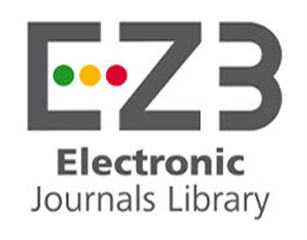HISTORY OF FORMATION OF MECHANISMS FOR PUBLIC REGULATION OF ANTI-CORRUPTION
DOI:
https://doi.org/10.32689/2617-2224-2020-4(24)-291-299Keywords:
history, mechanisms for public regulation, anti-corruption, Laws of Manu, Ancient BabylonAbstract
The purpose of this study is to theoretically substantiate formation and development of mechanisms for public regulation of anti-corruption.
The article analyzes that the ability of the state to counteract the deployment of corruption schemes in government is a clear indicator of the effectiveness of public services and development of the country. This trend in Ukraine will encourage the improvement of public service system and open up new prospects for membership in the European Union.
It is confirmed that the first corrupt practices were found in primitive society and were most likely related to pagan beliefs. In those days, people were completely dependent on the forces of nature and tried to placate the gods by offering sacrifices and gifts.
It is determined that Babylon was the first place in the world to legislate the principles against corruption that was most often practiced in the judiciary. This document was called the Code of Hammurabi and dated back to the XVII century BC. It is proved that corruption-related offenses were most often practiced by military commanders and representatives of the bureaucracy. Therefore, to avoid corrupt practices, public officials were elected on a competitive basis. The main condition for obtaining position was education of the individual, and given that only wealthy citizens could afford to get an education, the class of bureaucracy was formed only from wealthy members of society.
It is noted that the Middle Ages were characterized by an increased role of the church in the state, so representatives of religious elites owned the untold wealth and material goods, due to which the corruption also flourished here. Although in Catholicism it was considered a manifestation of depravity and contradicted the foundations of Christianity, the history, nevertheless, points to numerous facts of trade in indulgences and ecclesiastical titles.
References
Кустова Т. Формування й реалі- зація антикорупційної політи- ки в системі державної служ- би України: сучасний стан та шляхи вдосконалення // Зб. наук. пр. “Державне управління та міс- цеве самоврядування”. Дніпро: ДРІДУ НАДУ, 2019. Вип. 3 (42). 172 с. http://www.dridu.dp.ua/zbirnik_dums/2019/2019_03(42)/18.pdf
Беглиця В. П. Досвід європейських країн щодо формування антикоруп- ційної стратегії // Наук. пр. [Чорно- мор. держ. ун-ту ім. Петра Могили комплексу “Києво-Могилянська академія”]. Серія : Державне управ- ління. 2015. Т. 263, Вип. 252. С. 17– 23. Режим доступу: http://nbuv.gov.ua/UJRN/Npchdu_2015_263_252_5
Безрутченко В. С. Історичний шлях виникнення корупції, різноманіт- ність поглядів на проблему визна- чення дефініції цього явища // Боротьба з організованою злочинні- стю і корупцією (теорія і практика). 2008. Вип. 18. С. 279–286. Режим доступу: http://nbuv.gov.ua/UJRN/boz_2008_18_32
Волошенко А. В. Корупція: історичні витоки та сучасні прояви // Акту- альні пробл. економіки. 2015. № 3. С. 8–16. Режим доступу: http://nbuv. gov.ua/UJRN/ape_2015_3_3
Гурковський В. І., Климкова І. І. Шля- хи реалізації антикорупційної полі- тики України // Публічне уряду- вання. 2016. № 4. С. 110–124.
Нонік В. В., Савіцький В. В. Корупція як елемент державного управління в стародавніх цивілізаціях [Елек- тронне видання] // Державне упр.: удосконалення та розвиток. 2016. № 12. Режим доступу: http://www.dy.nayka.com.ua/?op=1&z=1017
Підбережник Н. П. Антикоруп- ційна політика в країнах західної Європи: досвід для України // Ефективність державного упр. 2013. Вип. 37. С. 123–132. Режим доступу: http://nbuv.gov.ua/UJRN/efdu_2013_37_18
Калич О. А. Семінар до Всеукра- їнського тижня права / Головне управління статистики в Закарпат- ський області / Запобігання про- явам корупції C.7 стр.5 http://www.uz.ukrstat.gov.ua/activity/seminar.pdf
Нонік В. В. Механізми формуван- ня та реалізації антикорупційної політики в Україні: дис. на здобут- тя наук. ступеня д-ра наук з держ. упр. за спец. 25.00.02 — механізми державного управління. Чорномор. нац. ун-т ім. Петра Могили. Мико- лаїв, 2019. 402 с.
Поплавський А. А. Державно-управ- лінська діяльність у сфері бороть- би з корупцією та організованою злочинністю. Інвестиції: практика та досвід. 2018. № 11. С. 138–143. http://www.investplan.com.ua/pdf/11_2018/27.pdf
Мего-Інфо — Юридичний портал № 1. Історичні прояви корупції та особливості боротьби з нею http:// mego.info/матеріал/11-історич- ні-прояви-корупції-та-особливості-боротьби-з-нею
Чишко К. О. Історичні передумови формування антикорупційного законодавства України. Держава та регіони. Серія: Право. 2019. № 2. С. 73– 78. http://www.law.stateandregions.zp.ua/archive/2_2019/15.pdf
Romanenko E., Zhukova I. V. Peculiarities of cooperation of the European Union in the framework of partnership civil society development programs Public management . 2020. № 2 (22). March 2020. Рp. 191–201.











